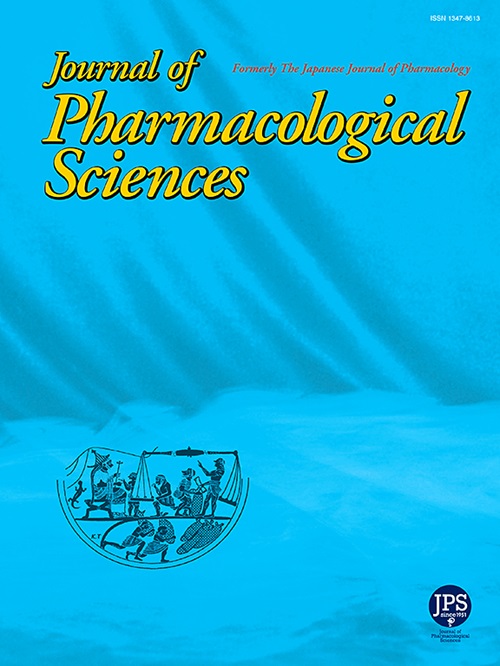Research on the protective effect of Rhizoma of Anemarrhena asphodeloides on TMT induced AD mice model based on network pharmacology combined with in vitro and in vivo experimental validation
IF 2.9
3区 医学
Q2 PHARMACOLOGY & PHARMACY
引用次数: 0
Abstract
Background
Alzheimer's disease (AD) is a neurodegenerative disease, and neuroprotection is an important approach to improving AD outcomes. Rhizoma of Anemarrhena asphodeloides (RAA) is a commonly used Traditional Chinese Medicine (TCM) with demonstrated neuroprotective effects, but its anti-AD mechanism requires further exploration.
Aim of the study
To elucidate the neuroprotective mechanism of RAA on TMT-induced AD mice.
Materials and methods
The AD mice model was established via intraperitoneal injection of TMT. The effect of RAA on ameliorating learning and memory was assessed using the Morris Water Maze (MWM) and Y-maze tests. Haematoxylin-Eosin (HE), Nissl, and TUNEL staining were used to observe the neuroprotective effect of RAA. The components in serum containing RAA (RAA-S) were detected using UPLC-Q-Orbitrap MS. Potential targets were predicted through network pharmacology and molecular docking. Serum levels of reactive oxygen species (ROS), malondialdehyde (MDA), superoxide dismutase (SOD), glutathione (GSH), and glutathione peroxidase (GPx) were measured with ELISA kits. The HT22 hippocampal neuronal cell line injured by l-glutamate (L-Glu) was used to further elucidate the mechanism of RAA. ROS levels in HT22 cells were detected with the 2′-7′-dichlorodihydrofluorescein diacetate (DCFH-DA) fluorescent probe and flow cytometry. Apoptosis in HT22 cells was measured by flow cytometry. The proteins MAP2, GAP-43, Nrf2, Keap1, HO-1, Bax, and Bcl-2 were detected by Western blotting. Immunofluorescence staining was employed to observe Nrf2 nuclear translocation.
Results
RAA significantly increased the residence time of mice in the W zone and enhanced the correct alternation rate in TMT-treated mice. RAA preserved the integrity and orderly arrangement of nerve cells. A total of 12 components were detected in RAA-S. AKT1, PPARG, CASP3, STAT3, HSP90AA1, and NFE2L2 (Nrf2) were involved in the RAA-S target pathway network. Molecular docking revealed that Nrf2 exhibited the highest average binding energy with all components in RAA-S. In vivo, RAA elevated MAP2, GAP-43, Nrf2, and HO-1 levels, along with GPx, GSH, and SOD activity, which had been reduced by TMT. Additionally, RAA reduced serum levels of MDA and ROS, which had been elevated by TMT. In vitro, RAA-S reduced HT22 cell apoptosis and ROS accumulation caused by TMT. Furthermore, RAA-S promoted the expression of N-Nrf2 and HO-1 in L-Glu-injured HT22 cells.
Conclusion
RAA attenuated oxidative stress induced by TMT and L-Glu in AD model mice. The underlying mechanism was associated with the activation of the Nrf2/Keap1-HO-1 pathway.

基于网络药理学结合体内外实验验证的母藤对TMT诱导AD小鼠模型的保护作用研究
背景:阿尔茨海默病(AD)是一种神经退行性疾病,神经保护是改善AD预后的重要途径。Anemarrhena aspholoides (RAA)是一种常用的中药,具有一定的神经保护作用,但其抗ad的机制有待进一步探讨。目的:探讨RAA对tmt诱导的AD小鼠的神经保护作用机制。材料与方法:通过腹腔注射TMT建立AD小鼠模型。采用Morris水迷宫(Morris Water Maze, MWM)和y迷宫(Y-maze)测试评估RAA对大鼠学习记忆的改善作用。采用血红素-伊红(HE)染色、尼氏染色、TUNEL染色观察RAA的神经保护作用。采用UPLC-Q-Orbitrap ms检测血清中含有RAA的组分(RAA- s),通过网络药理学和分子对接预测潜在靶点。采用ELISA试剂盒检测血清活性氧(ROS)、丙二醛(MDA)、超氧化物歧化酶(SOD)、谷胱甘肽(GSH)、谷胱甘肽过氧化物酶(GPx)水平。利用l-谷氨酸(L-Glu)损伤的HT22海马神经元细胞系进一步阐明RAA的作用机制。采用2'-7'-二氯双氢荧光素(DCFH-DA)荧光探针和流式细胞术检测HT22细胞的ROS水平。流式细胞术检测HT22细胞凋亡。Western blotting检测MAP2、GAP-43、Nrf2、Keap1、HO-1、Bax、Bcl-2蛋白的表达。采用免疫荧光染色法观察Nrf2核易位。结果:RAA显著增加了小鼠在W区的停留时间,提高了tmt处理小鼠的正确交替率。RAA保留了神经细胞的完整和有序排列。RAA-S共检测到12种成分。AKT1、PPARG、CASP3、STAT3、HSP90AA1和NFE2L2 (Nrf2)参与RAA-S靶点通路网络。分子对接发现Nrf2与RAA-S中各组分的平均结合能最高。在体内,RAA提高了MAP2, GAP-43, Nrf2和HO-1水平,以及GPx, GSH和SOD活性,这些都被TMT降低了。此外,RAA降低了血清中MDA和ROS的水平,而这些水平已经被TMT升高。在体外,RAA-S可减少TMT引起的HT22细胞凋亡和ROS积累。此外,RAA-S可促进l - glu损伤HT22细胞中N-Nrf2和HO-1的表达。结论:RAA可减轻TMT和L-Glu诱导的AD模型小鼠氧化应激。其潜在机制与Nrf2/Keap1-HO-1通路的激活有关。
本文章由计算机程序翻译,如有差异,请以英文原文为准。
求助全文
约1分钟内获得全文
求助全文
来源期刊
CiteScore
6.20
自引率
2.90%
发文量
104
审稿时长
31 days
期刊介绍:
Journal of Pharmacological Sciences (JPS) is an international open access journal intended for the advancement of pharmacological sciences in the world. The Journal welcomes submissions in all fields of experimental and clinical pharmacology, including neuroscience, and biochemical, cellular, and molecular pharmacology for publication as Reviews, Full Papers or Short Communications. Short Communications are short research article intended to provide novel and exciting pharmacological findings. Manuscripts concerning descriptive case reports, pharmacokinetic and pharmacodynamic studies without pharmacological mechanism and dose-response determinations are not acceptable and will be rejected without peer review. The ethnopharmacological studies are also out of the scope of this journal. Furthermore, JPS does not publish work on the actions of biological extracts unknown chemical composition.

 求助内容:
求助内容: 应助结果提醒方式:
应助结果提醒方式:


